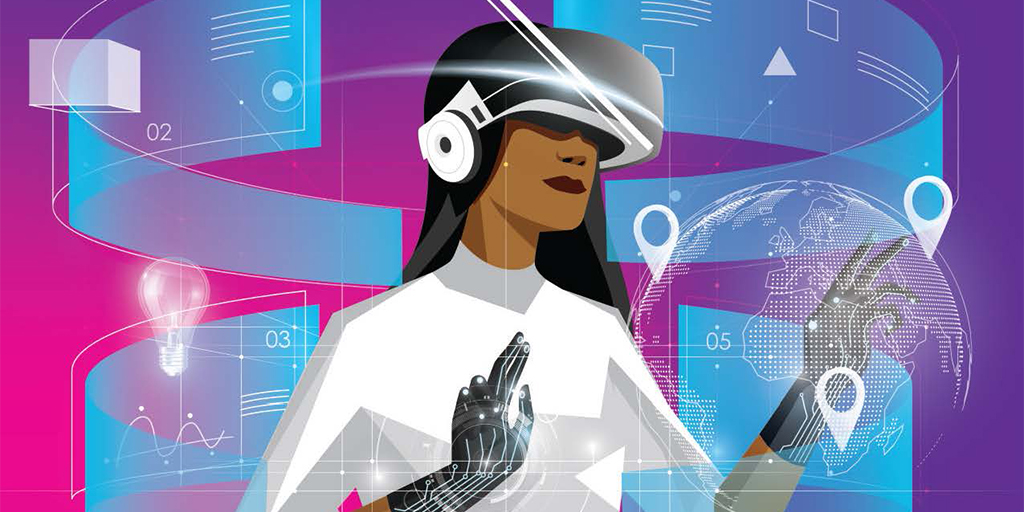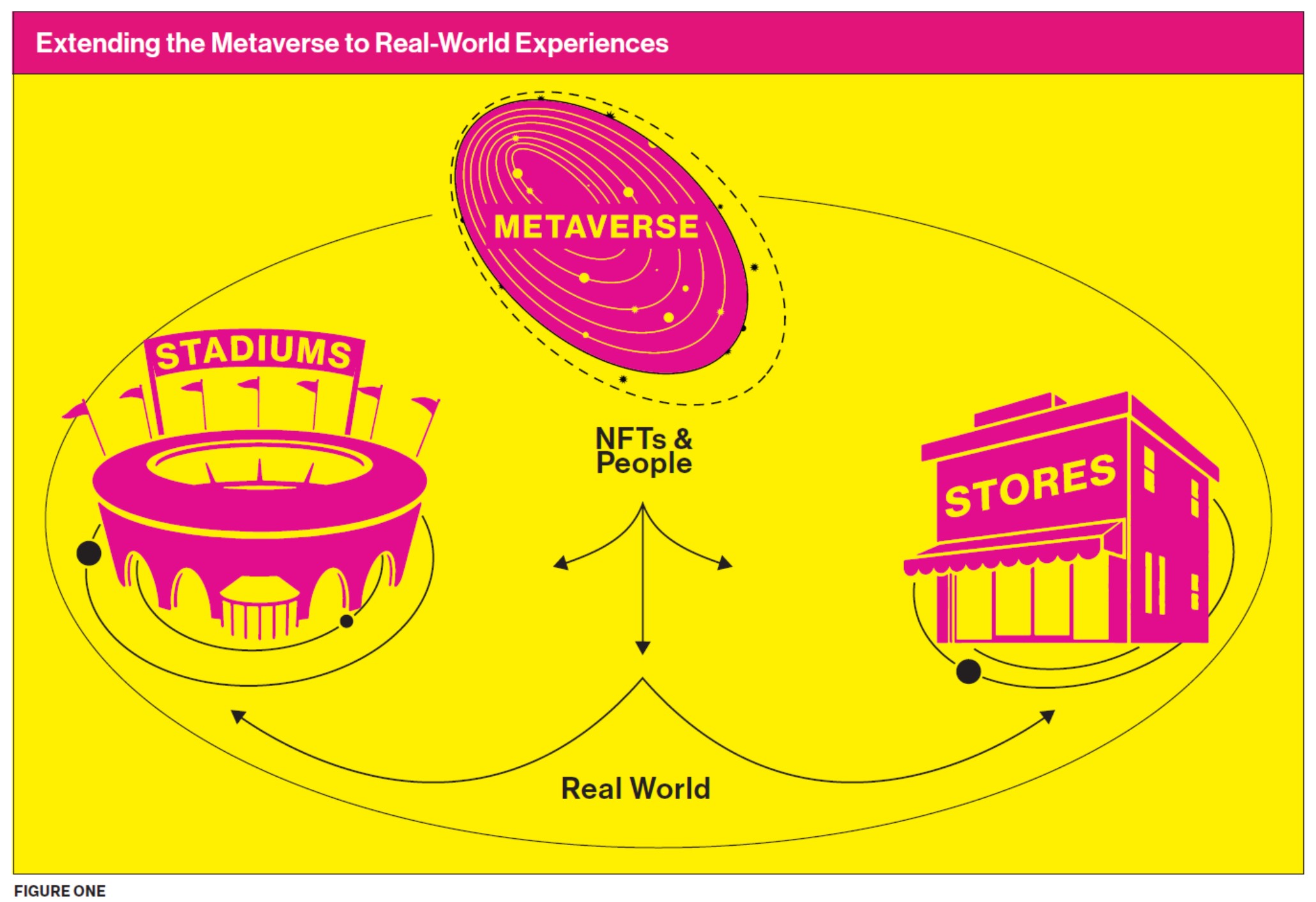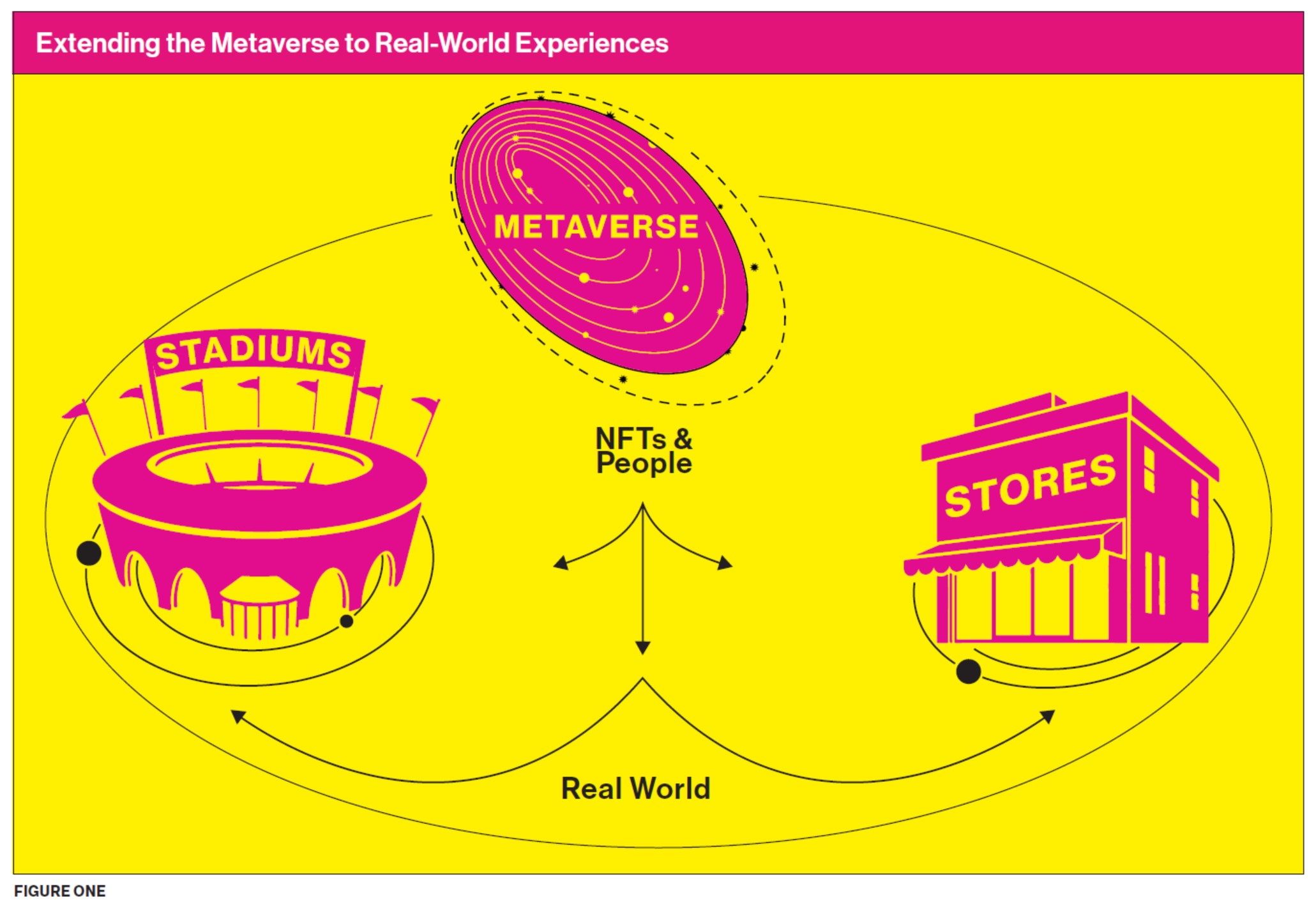
What, many readers will ask, is the Metaverse? It’s a simple enough question. However, explaining it has the same elusive quality as describing the Internet to our grandparents. A quick Google search for ‘What is the metaverse?’ will take you on a journey that twists and turns, but you won’t get very far. That’s because all of the experts are trying to define something that hasn’t been fully realized yet: The paint is still wet, so we can’t see its true colours yet.
This is where having three co-authors gets tricky. We each have a different perspective:
CATHY, THE FUTURIST: “The metaverse is a convergence of our physical and digital selves. Through Web 3.0 technologies such as VR, AR, AI, cloud, blockchain, crypto, 5G networks and edge computing, the metaverse allows our respective digital identities to catch up so we’re consuming content and creating revenue streams in a wholly interactive manner. There’s only one metaverse and it’s not here yet in its greater form. It’s being built and this decade is critical. It includes both the virtual and the physical world.”
DIRK, THE SERIAL ENTREPRENEUR: “The metaverse is like a parallel, immersive world that blurs with the real one where people assume one or multiple identities. At its core, it puts individuals at its centre. They are in control of their assets and data, which they can use, trade, sell and everything else that ‘true ownership’ powered by blockchain enables them to do. That’s why blockchain is a fundamental pillar of the metaverse. Are we there yet? Not fully. We can beam ourselves into metaverse platforms to enjoy true ownership and share experiences with other people and brands in like-minded communities. But to reach the full vision, we need to be able to easily port our identities, data and assets when moving from one platform to another. This might take another five or ten years, but the journey has already begun.”

The metaverse is the next generation
of consumer engagement.
TOMMASO, THE PROFESSOR OF ENTREPRENEURSHIP: “The metaverse is the next generation of consumer engagement: an immersive experience with a self-sustaining, community-driven economy at its centre. It’s a new digital reality for consumers empowering joint value creation: to build empathy with brands by becoming part of the product, rather than being the target of advertising.”
As different as they are, all three perspectives are correct. We decided to consolidate them to make the metaverse easier to understand. Here’s what we came up with:
The metaverse represents the top-level hierarchy of persistent virtual spaces that may also interpolate in real life, so that social, commercial and personal experiences emerge through Web 3.0 technologies.
Let’s unpack that phrase by phrase.
“THE METAVERSE REPRESENTS THE TOP-LEVEL HIERARCHY”: In terms of all the blockchain systems out there, the metaverse sits on top of them all. To put this in context of more familiar technology, it’s on the same ‘hierarchy level’ as social media. The first sighting of the metaverse wasn’t online or in a mobile app. It wasn’t conceptualized by a technology company or someone like Sir Tim Berners-Lee, the inventor of the World Wide Web. It comes from a novel published in 1992. Neal Stephenson’s Snow Crash is a piece of science fiction that depicted the metaverse as a space where the physical met with the virtual in a digitized space.
The term is derived from two root words: meta and universe. The Merriam-Webster definition of ‘meta’ as a prefix is “more comprehensive; transcending,” or “situated behind or beyond.” We like that concept, beyond. In the early days of blockchain (yes, 2022 is still early days), it may be hard to see things like Bitcoin under the metaverse umbrella. Why? Because Bitcoin has been around far longer and is much bigger than the metaverse today. However, the scope is rapidly expanding. The open nature of the metaverse will encourage all sorts of integrations, including Bitcoin and various other cryptocurrencies.
“PERSISTENT VIRTUAL SPACES THAT MAY ALSO INTERPOLATE IN REAL LIFE”: The metaverse isn’t a single, centralized destination like Google, Amazon or TikTok. The metaverse weaves together experiences from disparate applications and the real world to offer something, as Merriam-Webster puts it, transcending. In addition to a purely virtual experience, users will also be able to leverage their assets or virtual identity in the real world. And like the internet, the metaverse is always on, preserving user information for whenever they come back.
“SOCIAL, COMMERCIAL AND PERSONAL EXPERIENCES”: As we mentioned, the metaverse is a confluence of activity and everyone will have a different goal — including brands. Some will have friends and communities. Others will focus on running a business or adding new digital channels to existing business models. Like the internet as we know it, the metaverse offers access to these things, albeit in new, immersive ways that deepen user connections to their preferred environments.
“WEB 3.0 TECHNOLOGY”: Web 1.0 was the Internet of the 1990s and early 2000s. Web 2.0 added social networks, eCommerce, user content creation and the sharing economy. Web 3.0 is about more immersive experiences. This includes smarter search engines, social networks and other systems that will know more about each user’s preferences and deliver content with user-based context. More personal delivery is about ‘smarter’ content curation, but also more immersive connectivity to these systems. That means VR and AR systems that mimic physical interaction and break the wall between user and technology. We also need to consider underlying technology delivering these new experiences, such as blockchain, cloud computing and 5G cellular networks.
As you can see, the metaverse is a blend of the blockchain, web, social media, online gaming, DeFi and advanced hardware. It’s partly an actualization of what a more advanced internet or social media channel could be. But the language to explain it today is still primitive. Likewise, if you mentioned ‘TikTok’ to someone in the 1990s, they would think you were talking about a clock.
Putting the Metaverse in Historical Context
The idea of the metaverse has been around for decades, but technology needed to catch up. Now that generations of digital natives have grown up with powerful computers in their hands from infancy, we’re seeing technology and culture come together. These generations have greater expectations for technology than those who grew up in the Web 1.0 or even Web 2.0 eras.
There are many implications. For one thing, people will value their digital identities more. They will want and expect immersive experiences, not just during their downtime but with other aspects of their lives as well. Also, we are seeing the rising importance of consumers getting directly involved with digital commerce — not only from the buying side, but the selling side as well.
Consider the reward systems of each inflection point. Web 1.0 and Web 2.0 offered intrinsic rewards such as learning something new, connecting with other people or getting a quick dopamine fix from cat videos. Getting into the metaverse — and more importantly, the metaverse economy — we see a shift to intrinsic and extrinsic rewards. In combination with the feel-good moments of consumption, people are experiencing financial gain in these digital worlds. It’s no longer enough to search and consume information on the Web. It’s not even enough to socialize. People are shifting toward deeper immersion much closer to what we see when we’re offline than when we’re jacked in. This paradigm shift comes down to three core principles:
EXPERIENCE. People don’t just want to consume. It’s far more engaging to have gamified, contextual experiences.
IDENTITY. People value their digital persona and want to carry it with them across the metaverse and even into the real world.
OWNERSHIP. Wherever people choose to spend their time, they want skin in the game.
Accordingly, the next decade will see the metaverse transform business models, product portfolios and career paths. And just like the internet and social media, people and companies that jump in early will define the experience and find groundbreaking opportunities.
Once you get the metaverse down to its roots, it’s pretty straightforward. A good way to think of it is to picture our solar system. At the centre is the sun, which in this case would be a blockchain such as Ethereum, Polygon or EOS. Orbiting around the blockchain core are decentralized applications (dApps.) This is where people ‘go’ in the metaverse.
Today’s metaverse is full of ‘walled gardens’ where dApps aren’t connected — even if they’re on the same blockchain. This is similar to traditional software and application platforms that don’t ‘talk’ to each other. Siloed applications make it difficult (or impossible) for users to move their data and assets with them. As people spend more time in their favourite dApps and earn more assets, the pressure for people to take their coins, tokens, avatars, non-fungible tokens (NFTs) and other assets across apps will
increase. The long- term vision is an open, decentralized metaverse, but there are technological and aesthetic challenges.
For example, if a player earned a unique NFT of an astronaut in a space exploration game, they should be able to use it in other dApps. But how should that NFT look and function in a different dApp, such as a medieval fantasy game? Every dApp has a unique visual design and game rules. Moving assets across dApps brings immersion and game-breaking challenges dApp operators need to solve.
Interoperability — the ability for systems to connect and exchange information — has been around long before the metaverse. But perhaps many dApps call themselves a metaverse (with a lowercase m) because the bridges of interoperability are a ways away; it’s hard to think of individual dApps as part of a whole when there’s no interoperability.
Blockchain-based dApps have the potential to communicate and exchange information in ways we haven’t experienced before in the history of the Internet. We can have an ‘open metaverse.’ So while every app and blockchain are built and operated by different companies, the full vision is a connected universe of applications. People will move between dApps and bring their assets and identity with them. It’s a total game-changer that will redefine the online experience and blur the lines between the real and virtual worlds.


Interoperability has implications on two levels: in the user experience and in the underlying infrastructure. We won’t go into the technicalities of the infrastructure here. For us, what is important is how interoperability impacts user behaviour.
Let’s use a hypothetical example. In Axie Infinity, players breed Axie creatures and compete with each other in battles using their Axies. In Upland, players collect properties and explore a digitization of various cities. These dApps exist on different blockchains — Ethereum, Ronin and EOS, respectively. Through interoperability, it is possible to take an Axie creature out of Axie Infinity and put it into Upland. Maybe the player can use the Axie as a pet inside an Upland property; or maybe they have a rare Axie and want to show it off outside Axie Infinity. As we mentioned earlier, dApp operators need to figure out how to make interoperability seamless across the metaverse to allow people to fully enjoy their digital assets and chosen environments.
Some see this shift from silos to integrated as the key to our digital identities catching up with our real lives. When you go out on a Friday night, you don’t have different names and driver’s licences for every bar. You don’t change your wallet or clothes either — you just go. As the metaverse matures, users will take their items and identities along as they hopscotch between virtual destinations. The stitches of the metaverse will weave closer and closer together until it’s all one big experience.
When businesses develop a metaverse strategy, they need to think of the metaverse as part of a whole, similar to an omnichannel strategy. Figure One shows how NFTs owned in the metaverse may be utilized to drive commercial opportunities in real life. Let’s say a business launches NFTs into a dApp as part of a player-to-player competition. The NFTs become a sort of trophy, and now that this player owns a unique asset, there are opportunities to further gamify the consumer experience. For example, the business could design the NFT as a key to exclusive discounts in stores, for early access to products, as a ticket to private events, as a membership card to a club, or some other real-world experience. By doing this, companies can tie together the metaverse economy with their overall business strategy.
As cool as interoperability is for users, the metaverse has an even grander vision. Integration doesn’t stop at dApp interoperability; the metaverse is meant to be a part of our digital and physical realities. This brings a major opportunity to brands looking for ways to get digital-first consumers to reach out and touch their products.
In closing
The metaverse is the culmination of Web 1.0, Web 2.0 and growing digital-first consumerism. It’s still in its infancy, but if companies learn anything from the past, it should be that the early adopters gain an advantage that lasts. Some can pivot late, but the whiplash causes a serious nosebleed. In 2006, Google caught on to social sharing with its YouTube acquisition for US$1.65 billion. Microsoft saw the power of community-based games and the potential of tapping into younger, digital-native consumers by paying $2.5 billion in 2014 for the Minecraft intellectual property. And Facebook caught up to social media’s shift to video by acquiring Instagram in 2012 for $1 billion.
It seems like Facebook learned its lesson about where it wants to be on the technology adoption curve, too. So much so that in October 2021, it rebranded to become Meta, a metaverse-first company. That’s a company with 2.9 billion monthly active users (not including Instagram) turning the wheel before the metaverse goes mainstream. Couple that with Bloomberg Intelligence’s prediction that the global metaverse opportunity could reach $800 billion in 2024. If these aren’t indicators of where the metaverse is headed, we don’t know what is.
Cathy Hackl is the CEO and Chief Metaverse Officer at the Futures Intelligence Group. She hosts two podcasts: Adweek’s Metaverse Marketing podcast and Future Insiders. Dirk Lueth is a serial entrepreneur and an early adopter of blockchain and related technologies. He co-founded companies in the FinTech and digital media spaces, including the Financial Times Deutschland and Forbatec. Serial entrepreneur Tommaso Di Bartolo is the lead instructor at the UC Berkeley Sutardja Center for Entrepreneurship and Technology and a mentor for Google Launchpad.
Excerpted with permission from the publisher, Wiley, from Navigating the Metaverse: A Guide to Limitless Possibilities in a Web 3.0 World by C. Hackl, D. Lueth and T. Di Bartolo. Copyright © 2022 by John Wiley & Sons, Inc. All rights reserved.
Share this article: